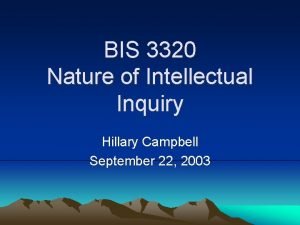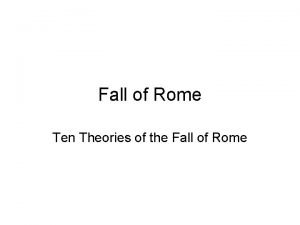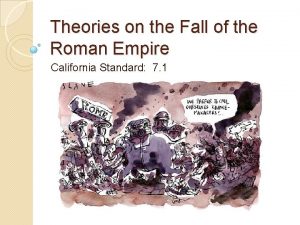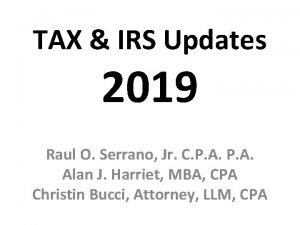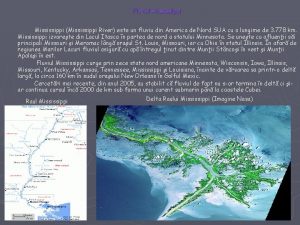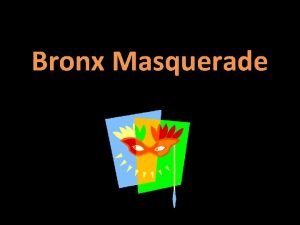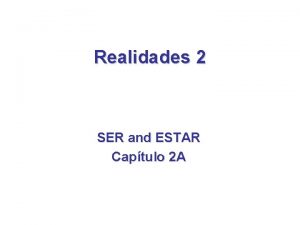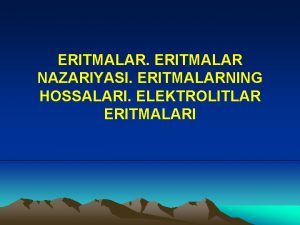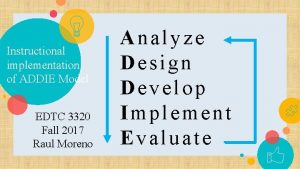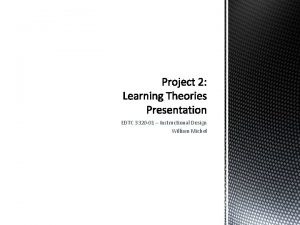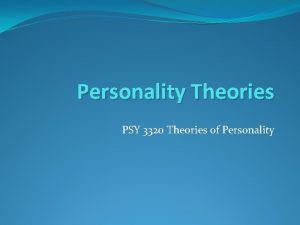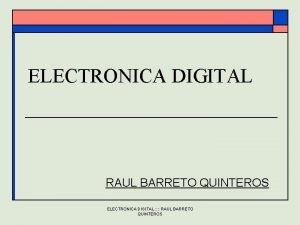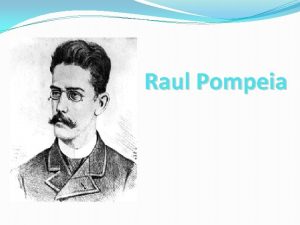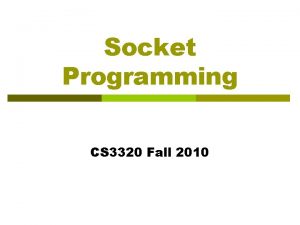Learning Theories Fall 2017 Raul Moreno EDTC 3320















- Slides: 15

Learning Theories Fall 2017 Raul Moreno EDTC 3320

Learning Theorist (Cognitive) While no theorist has claimed to have created the Information Processing Theory, contributors have credited their work within the workings of human memory. 1. George A. Miller (1920 -2012): introduced ”chunking” with the capacity of short term memory and (Test-Operate-Test-Exit) TOTE 2. Atkinson and Shriffin (1968): Multi Store Model Of Memory within sensory memory, short-term memory (STM), and long-term memory (LTM) 3. Craik and Lockhart (1972): Levels Of Processing Model through shallow processing, deep processing, and summary 4. Bransford (1979): Anchored instruction requires media to share experiences with learners upon a topic 5. Rumelhart and Mc. Clelland (1986): Connectionist Theory, lead to the occurrence of memory repetition

Ivan Pavlov Facts (Behavioral Theorist) Charles Darwin influenced Pavlov’s scientific pursuits The study of digestion, as in Classical Conditioning Theory, lead to his famous discovery Pavlov’s actual interests was physiology rather than psychology Awarded Noble Prize in physiology/medicine for research on digestion Born in Central Russia

Introduction to Cognitive Theory Ø Created in 1950, the Information Processing Theory is defined as a cognitive framework as to how humans process, store, and utilize information similar to a computer processor. Ø The concept behind the information processing model relies on the humanistic approach of the following 3 components of ”storing” information: Information processing system (input of data) Modifies/operates on processing information Retrieve information from memory for sensory output

Theory in Practice Ø In a study of nursing education, “students must be equipped to questioning skills and problems solving, so by exploration and information processing, they will be able to learn actively” (Aliakbari, Parvin, Heidari, & Haghani, 2015). Ø For this reason, individuals process information in various forms all of which differ amongst cognitive abilities and reciprocal outcomes. Ø In practice, compatible content should be designed to illustrate the importance of measureable outcomes.

Information Processing Model (2 nd study) • Engagement of patient, beings information processing • Evaluate advantages and disadvantages of evidence based on outcomes Cue recognition Hypothesis generation Hypothesis evaluation Cue interpretation • Formulate appropriate measures following applied information • Interpret information as to whether it should be applied or disregarded (Banning, 2007)

Findings within Cognitive Theories Ø “Learning combined with understanding instead of mechanical repetition of excitation-response relationship needs to be consistent with previous experiences or existing knowledge in order to create new awareness” (Aliakbari, Parvin, Heidari, & Haghani, 2015). Ø Information Processing Theory presents a conceptualized perspective that withholds the human mind functions as a stimulus drive that supposedly, operates based on past or current experiences.

Cognitive Impact on Learning Ø “Many adults had not developed the ability to understand information that was being presented to them during their early years of schooling” reflects the physiological nature that differentiates within adult learning (Peltz, 1980). Ø Additionally, “research with older adults also suggests that as people age they appear to become less efficient at…processing information into long-term memory” (Merriam & Bierema, 2014). Ø Information Processing presents a significant reinforcement, in which an individuals cognitive experiences is due to the developmental stages upon personal and environmental experiences that influence intellectual learning.

Introduction to (Behavioral) Theory Ø The principles of conditioning consist of 4 components: 1. Unconditioned Stimulus (UCS): automatic response 2. Unconditioned Response (URS): unlearned response 3. Conditioned Stimulus (CS): neutral stimulus 4. Conditioned Response (CR): learned response Ø This stimulus-response approach applies overt responses based on environmental stimulus and the instinctively (known) stimulus.

Classical Conditioning Theory (Behavioral) Ø In 1903, Ivan Pavlov created The Classical Conditioning Theory which provoked a response mechanism based on the analysis of ringing a bell with meat, in which with or without the powdered meat, the dogs response was immediate. Ø Classical conditioning can be implemented amongst human and animals to evaluate their response to the environment.

st Case Study in Behavioral practice (1 study) Ø Feinberg (1986) experimented with or without credit cards to evaluate whether or not participants would donate to a charity. Ø Findings: 1. The credit card as an unconditioned stimulus (US), while the charity event presented conditioned stimulus (CS). Ø Results: 1. Given the limitations of the stimulus concerning removal of credit card or anticipation of CS, classical conditioning “entails a very strong US such as an intense shock or a nauseating drug” (Pornpitakpan, 2012).

Stimulus, response and consequence Ø Findings: 1. Situations respond through differential behavioral patterns in which the reinforcement of situation is likely to occur if satisfaction is associated with the event. 2. On the other hand, discomfort or dissatisfaction that promotes undesirable behavior weakens the reoccurrence of an event. Ø Results: 1. Environmental factors, either positive or negative, can influence the actions of the learner being that, feedback is reinforced to strengthen the interpretation of meaningful events.

Findings within Behavior Theories Ø Each experiment signifies the response of a stimulus event that triggers either positive or negative reinforcement as a cognitive function for the purpose of measuring behavioral stimulus to occur upon the situation or environmental setting. Ø The explanation of human behavior can best be categorized through a scientific method or standpoint that justifies the physiological actions of the individual.

Behavioral Impact on Learning ØGiven the elicit response generated by the environment, “the teachers of adult students have to adjust their instructional strategies and relationships with students so as to challenge and respect their special strengths and constraints as adults” (Seifert & Sutton, 2009). ØIn other words, adult education consist of differential measurements, family obligations or social issues, in which an individuals stimulus-response and motivation levels are altered through positive or negative environments.

References Ø Aliakbari, F. , Parvin, N. , Heidari, M. , & Haghani, F. (2015, February 23). Learning theories application in nursing education. Retrieved September 03, 2017, from https: //www. ncbi. nlm. nih. gov/pmc/articles/PMC 4355834/ Ø Banning, M. (2007). A review of clinical decision-making: models and current research. Retrieved September 5, 2017. Ø Hess, A. K. , & Greer, K. (2016). Designing for Engagement: Using the ADDIE Model to Integrate High-Impact Practices into an Online Information Literacy Course, 10. Retrieved September 6, 2017. Ø J L, "Information Processing Theory, " in Learning Theories, December 4, 2015, https: //www. learningtheories. com/information-processing-theory. html Ø OSWALT, A. (2008, January 16). Early Childhood Cognitive Development: Information Processing. Retrieved September 03, 2017, from https: //www. mentalhelp. net/articles/early-childhood-cognitive-development-information-processing/ Ø Pornpitakpan, C. (2012, July 28). A critical review of classical conditioning effects on consumer behavior. Retrieved September 3, 2017, from http: //repository. umac. mo/bitstream/10692/854/2/1 -s 2. 0 -S 1441358212000304 -main. pdf Ø Pritchard, A. , & Woollard, J. (2010). Psychology for the Classroom: Behaviourism (M. Jarvis, Ed. ). Retrieved September 3, 2017. Ø Peltz, W. L. (1980). Adult Learning Problems: Insights, Instruction, and Implications, 214 th ser. Retrieved September 13, 2017. Ø Merriam, S. B. , & Bierema, L. L. (2014). Adult learning: linking theory and practice. San Francisco, CA: Jossey-Bass, a Wiley brand. Ø Seifert, K. , & Sutton, R. (2009). Educational Psychology (2 nd ed. ).
 Bis 3320
Bis 3320 Biocupacional
Biocupacional Ten theories on the fall of rome
Ten theories on the fall of rome Fall of rome theories
Fall of rome theories 2017 dvhimss annual fall conference
2017 dvhimss annual fall conference Cuadro comparativo e-learning b-learning m-learning
Cuadro comparativo e-learning b-learning m-learning Raul de mello franco junior
Raul de mello franco junior Raul serrano cpa
Raul serrano cpa Kasutusluba
Kasutusluba Local guide program
Local guide program Tyrone bittings bronx masquerade
Tyrone bittings bronx masquerade Este peine de raul
Este peine de raul Raul crisul repede
Raul crisul repede Josef a high school student tells his therapist
Josef a high school student tells his therapist Osmotik bosim qonunlari
Osmotik bosim qonunlari Namaiesti arges
Namaiesti arges
